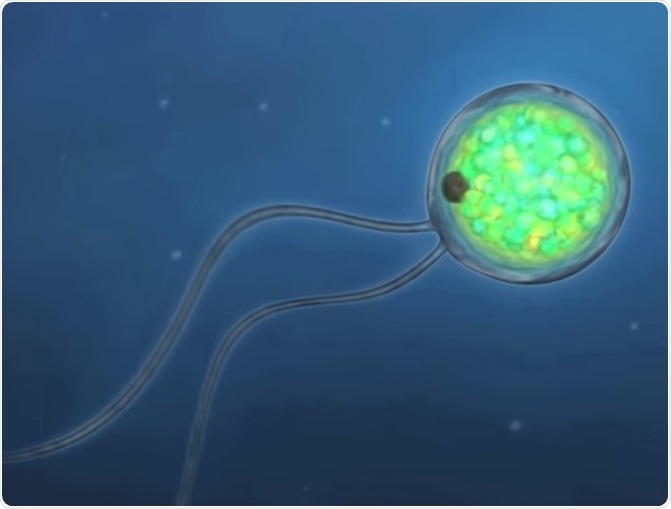What is Optogenetics?
Optogenetics is a combination of the manipulation of genes and optics in living tissues. This technique uses light-responsive proteins called opsins. This allows scientists to switch selective neurons on or off precisely and selectively.
The involvement of these proteins within cultured cells of the brain of living animals allows the study of neuronal functions and structures. This technology is very helpful to investigate which brain circuits are responsible for certain neurological conditions as well as for the restoration of vision to some extent. Furthermore, it can be used to look at individual synapses, neurons, and brain functions using animals as disease models.

Throughout all the kingdoms of life - in plants, in funguses, and bacteria and so on - there are photosynthetic or photosensory molecules that convert light into electricity. Explained: Optogenetics, Massachusetts Institute of Technology (MIT)
In 2005, Edward Boyden and Karl Deisseroth at Stanford University, USA, attempted to genetically encode brain cells that were photosensitive. They confirmed that the opsin called channelrhodopsin can be transduced into neurons to allow regulation of their electrical signaling. This protein turns them on via the opening of ion channels within the neuron in response to blue light pulses.
Overall, optogenetics is a very remarkable technique to understand complex brain functions and the external behaviors linked to them. In further studies, the UV-responsive protein Channelrhodopsin-2 was used for the activation of in vitro neurons. Two years later, scientists made it possible to use Channelrhodopsin-2 in freely moving mice, which had to be exposed to a light source via an intracranial fiberoptic cable. Due to these achievements, it is now possible to evaluate the impact of optogenetics in cell biology.
The advantage of this technique is that it is possible to control the timing, location, and intensity of the signals very precisely by light. Additionally, it is an inexpensive method, as it uses easier methods to generate light sources, such as the light-emitting diode (LED) or laser.
Another advantage of optogenetics over pharmacological techniques is that it can precisely target the cell, which leads to much fewer off-target effects.
Although the technique is very useful in neuroscience developments, it is not perfect. There are many different neurons within the brain that are light-responsive and are targeted during the applications of optogenetics. However, the light-evoked response may not mirror the spontaneous biological response of these neurons in the absence of light.
Additionally, switching neurons on and off could lead to neuroplasticity in the cells, which would not happen in other circumstances. Therefore, the results obtained by optogenetics may not always be generalizable to a bigger population.
Another disadvantage is that optogenetics tools can´t turn on different subtypes within the population that have been genetically engineered. Therefore, it remains one of the targets of optogenetics to overcome this obstacle and ensure even more precision.
Explained: Optogenetics
Optogenetics in the Treatment of Human Neurological Diseases
Optogenetics is still in its early stages in human disease models. However, recent clinical trials are working on the use of optogenetics to relieve vision loss, deafness, pain, and other conditions in humans. The first application of optogenetics in a human disease model was in 2016.
A woman with blindness due to the degenerative condition retinitis pigmentosa had a genetically modified adeno-associated virus injected into her retinal ganglion cells eye. This virus carried the gene for the algae protein channelrhodopsin. The experiment aimed at restoring light-sensitivity to the retinal cells via this opsin. In fact, some restoration did occur. The precision and specificity of human cells make this technology effective for this type of treatment.
Many other studies are ongoing and some may eventually reach the level of clinical trials. At present, techniques are only applied to animal models. One particular study for treating deafness is underway, and its aim is to enhance the performance of cochlear implants. This type of implant is currently not sensitive enough to allow the user to understand speech when surrounded by a loud conversation in a room, for example.
The neuroscientist Tobias Moser from Goettingen University in Germany is attempting to increase the precision of this implant using optogenetics. His approach includes the induction of light-responsive ion channels in cochlear cells and linking them with a specific LED array. This would allow sound signals to be converted into light, which would increase the ability to receive more frequencies.
A further field of application is the treatment of neurodegenerative diseases such as Parkinson’s disease and Alzheimer’s disease with the use of optogenetics. One project is focused on the development of an implantable light-delivery device to improve deep-brain electrical stimulation, a technique used for patients with Parkinson’s disease and other brain disorders.
It is very difficult to control electric activity in the brain without causing side effects. However, for now, animal models are widely used to understand off-target effects with optogenetics before its application on human disease models in clinical trials can be considered.
Further Reading
Last Updated: Aug 16, 2023